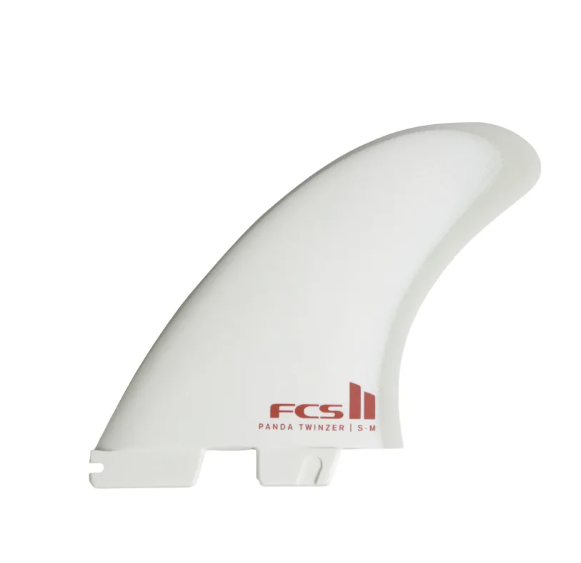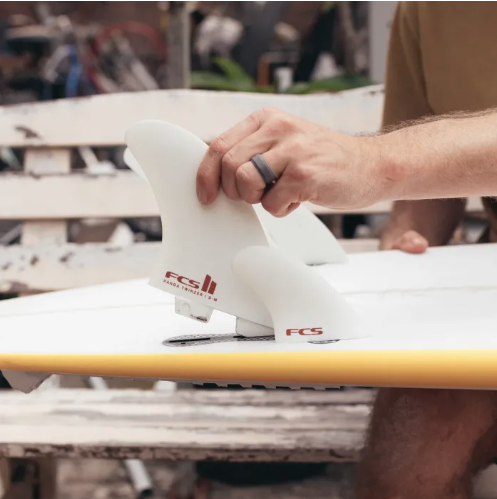Description
FCS II Panda Twinzer Performance Glass Twin Fin + Twinsers Fins Small to Medium
Designed by Blake Peters for his Panda Shiitake and Shiitake HP Twinzer models, this unique twinzer set has twin side fins at the back and 2 x mini stabilisers at the front.
Overview
Designed by Blake Peters for his Panda Shiiitake and Shiiitake HP Twinzer models. The front twin fin is neutral and well balanced, categorising it as an all-round twin fin with equal parts drive, manoeuvrability and hold. The side fins sit in the S-M size category, however the addition of the two forward stabiliser fins increases the overall surface area of the set, adding even more drive and control.
The differentiating factor of this twin set are the stabiliser fins which are small yet have a robust outline and sit quite upright. Positioned slightly forward of the larger side fins, and towards the rail, these stabilisers increase the surface area around the lower half of the fin cluster, which is traditionally linked to acceleration and drive.
When compared to other twin fins, the board will feel more locked-in and have a feeling of predictability and control, especially when driving through the first 2/3 of the turn or carve. The release factor that’s synonymous with the twin fin set up is still very much present.
- Drivey Twinzer Template
- Stable and predictable feel
- Use with additional Twinzer fins
- Twin fin + Twinzers
Board Types
- Designed to fit the FCS II Fin System.
- Recommended for all board types including fish, funboard and twin fin boards utilizing Twinzer fin setups. Specifically for the Panda Shittake and Shittake HP board models.
Performance Glass
Performance Glass (PG) fins are machine cut from layers of solid fiberglass. These fins are stiff, and are widely used by pro level surfers because the integrity of the flex is maintained under immense force, and in the most extreme of conditions and situations.





